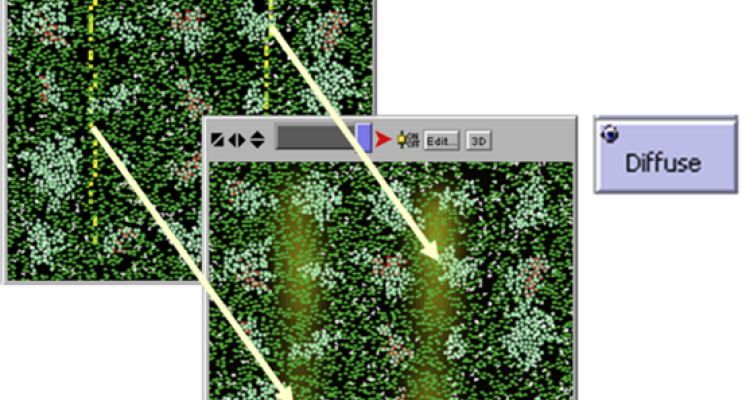
Thesis subject
MSc thesis topic: Exploring system dynamics as a result of human decision-making; the case of the Agrodiversity v.2 agent-based model
Biodiversity loss associated to agricultural intensification is one of the most important issues on the global change agenda. Till recently, biodiversity within agricultural systems was perceived by mainstream science as a symptom and cause of economic inefficiency.
Today it is increasingly recognized that biodiverse agriculture can be productive and play an important role in food security, in providing ecosystem services and in creating a wildlife friendly landscape matrix for biodiversity conservation. However, encouraging stakeholders towards maintaining or shifting to agrodiverse systems faces many social and ecological challenges: (1) in many cases, it is still unclear how much diversity is actually needed to provide basic inputs and services at the field level, and how specific ecological networks improve agroecosystem functions, (2) the relations between agricultural sustainability and agrodiversity management are not-easily grasped or demonstrated, as both are complex and long-term processes, (3) labor and/or financial constraints as well as transition costs can limit agrodiverse system adoption, (4) contrasting agrodiversity management strategies can coexist in the same landscape and influence each other both in positive and negative ways. Agent-based socio-ecological models –coupled with role-playing games- can be powerful tools to understand and address the issues, trade-offs and conflicts associated with the adoption and sustainable management of agrodiversity.
The Agrodiversity v.2 stylised agent based model (Garcia-Barrrios and Speelman, 2006) was developed primarily as a learning tool to explore the social, ecological and economic aspects of the concept. The model simulates a virtual diverse agro-ecosystem with four ecological agents. The user is challenged to explore ecological parameters and design a productive sustainable system. A model extension was developed to start exploring the impact human decision-making processes in a more complex landscape setting (Speelman and Garcia-Barrios, 2006).
Objectives
- To update the existing Agrodiversity model to the most recent Netlogo version
- Select a relevant behavioural decision-making theory and implement it in the model
- Develop the an agricultural landscape version of the model
- Perform a sensitivity analysis of the developed model
- To identify, explore and analyse the impacts of different management options on social, ecological and economic performance of the simulated agrodiverse system
- Develop and explore relevant scenarios with the model
Literature
- Speelman, E. N., & García-Barrios, L. E. (2010). Agrodiversity v. 2: an educational simulation tool to address some challenges for sustaining functional agrodiversity in agro-ecosystems. Ecological Modelling, 221(6), 911-918.
- Speelman, E., & García-Barrios, L. (2006). Strawberry Fields Forever? Developing a Socio-Ecological simulation game with Agrodiversity ver. 2 for exploring biodiversity management issues in sustainable agriculture. In Proceedings of the Agent 2006 Conference Social Agents: Results and Prospects. Argonne National Laboratory and the University of Chicago (pp. 289-303).
- Jager, W., Janssen, M. A., & Viek, C. (2001). Experimentation with household dynamics: the consumat approach. International Journal of Sustainable Development, 4(1), 90-100.
Requirements
- Interest and some experience in agent based modelling
- Interest in behavioural decision-making theories
Theme(s): Modelling & visualisation; Human – space interaction